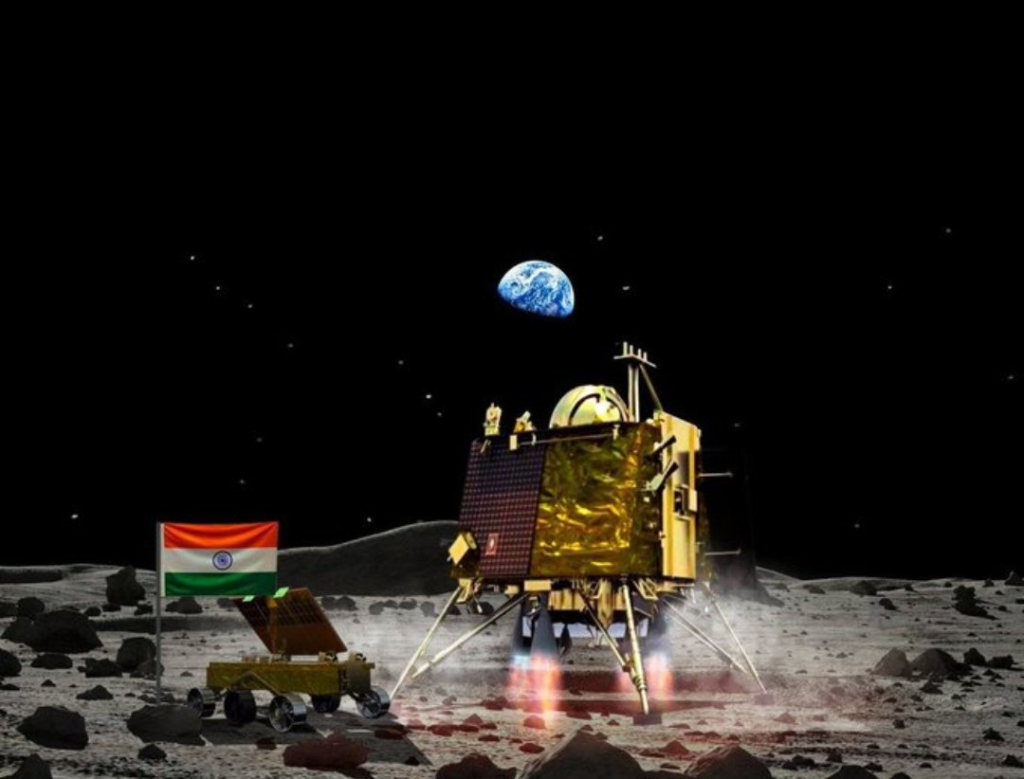
India has once again made its mark in the realm of space exploration. The Chandrayaan-3 mission, orchestrated by the Indian Space Research Organisation (ISRO), has successfully landed near the Moon’s little-explored south pole, making India the fourth country to achieve this feat.
A Glimpse into the Mission
The Chandrayaan-3 mission, whose name is derived from the Sanskrit word for “mooncraft”, embarked on its journey onboard a Launch Vehicle Mark-III rocket from Andhra Pradesh. The mission’s primary objective was to explore the lunar south pole, a region believed to be rich in water ice and other precious elements. The presence of water ice is particularly significant as it could support human habitation on the Moon in the future and serve as a potential fuel source for rockets and spacecraft.
The Vikram lander, an integral part of the Chandrayaan-3 mission, played a pivotal role in capturing images of the Moon’s far side and identifying a safe landing spot devoid of boulders or deep trenches. The lander also houses a rover, which is expected to further explore the lunar surface.
Overcoming Past Challenges
This mission comes on the heels of the Chandrayaan-2 mission, which faced challenges during its landing phase in 2019. A software glitch led to the crash of its Vikram lander. However, ISRO, undeterred by past setbacks, meticulously studied the data from the previous mission, conducted simulation exercises, and rectified the glitches for Chandrayaan-3.
Global Context
The success of Chandrayaan-3 is not just a win for India but holds significance on a global scale. The mission’s accomplishment comes shortly after Russia’s Luna-25 spacecraft met with an unfortunate crash on the Moon. With this achievement, India joins the elite group of nations, including the U.S., the former Soviet Union, and China, to have successfully landed on the Moon.
The lunar south pole has garnered interest from various countries due to its potential resources. Wendy Cobb, a professor at the U.S. Air Force School of Advanced Air and Space Studies, emphasized the importance of the south pole for future exploration, highlighting its scientific, historical, and geological significance.
Looking Ahead
India’s endeavors in space exploration have been marked by determination, innovation, and resilience. The success of Chandrayaan-3 is a testament to the country’s capabilities in space technology and research. As India continues to make strides in this domain, collaborations with other nations, including the U.S., are on the horizon. The joint efforts between ISRO and NASA are anticipated to further space exploration, with projects like flying Indian astronauts to the International Space Station in the pipeline.
In the words of India’s Prime Minister, Narendra Modi, the success of Chandrayaan-3 is a triumph for all of humanity. It sets the stage for future moon missions and symbolizes the boundless possibilities that lie ahead in the realm of space exploration.

